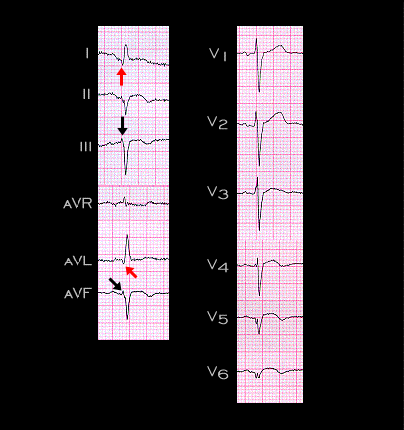
The ECG shown here is an example of an inferior wall infarction with lateral and possibly posterior wall involvement in association with left anterior fascicular block. The fascicular block causes the small Q wave in leads I and aVL (red arrows) and the small R wave in leads III and aVF (black arrows). These features mask the diagnosis of the inferior wall infarction which is responsible for the Q wave in lead II. The Q wave in leads V5 and V6 as well as the ST segment elevation and T wave inversion in these leads are caused by the lateral wall involvement and the R waves in leads V1-V3 suggests possible posterior wall involvement.
